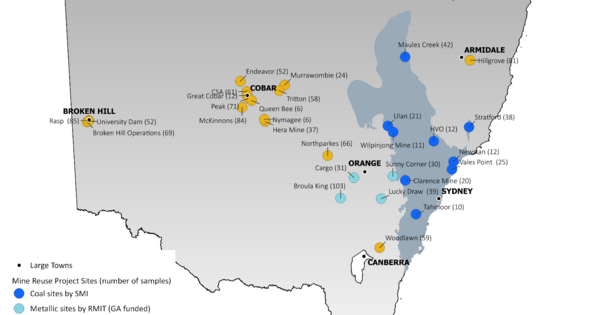When USDA Cuts Staff, Farmers Pay the Price: Lessons from the ERS and NIFA Relocations
In a move reminiscent of past disruptions but at a much larger scale, the Trump administration is implementing widespread staffing cuts across federal agencies. The United States Department of Agriculture (USDA) is facing a significant reduction, expecting approximately 30,000 USDA positions to be eliminated. About 16,000 employees have already accepted deferred resignation offers. This downsizing […] The post When USDA Cuts Staff, Farmers Pay the Price: Lessons from the ERS and NIFA Relocations appeared first on National Sustainable Agriculture Coalition.


In a move reminiscent of past disruptions but at a much larger scale, the Trump administration is implementing widespread staffing cuts across federal agencies. The United States Department of Agriculture (USDA) is facing a significant reduction, expecting approximately 30,000 USDA positions to be eliminated. About 16,000 employees have already accepted deferred resignation offers. This downsizing – particularly when coupled with office closures and relocations – threatens to undermine USDA’s capacity to serve America’s farmers, ranchers, and rural communities.
Farmers already face long wait times at local USDA offices, often going months without knowing if their loans are approved or waiting for reimbursement for conservation expenses. Staffing cuts will greatly exacerbate these already long delays. While Congress can continue to authorize funds for farmers to cope with ongoing natural and market disasters, many may needlessly suffer without the staff to run the programs and deliver the funds.
This post examines the disruption likely to result from USDA staffing cuts – whether by office closure, relocation, or resignations – by highlighting the lessons learned from staff losses during the previous Trump administration.
The 2019 ERS and NIFA Relocations: A Cautionary Tale
To understand the potential consequences of forthcoming staff cuts, this post looks back to 2019, when two of the USDA’s research agencies—the Economic Research Service (ERS) and the National Institute of Food and Agriculture (NIFA)—were relocated from Washington, DC to Kansas City, Missouri. The result was not cost savings or improved efficiency. Instead, the relocation gutted the agencies, leading to the departure of hundreds of experienced staff, the loss of decades of institutional knowledge, and a severe and lasting drop in productivity and ability to serve farmers and stakeholders.
The loss of experienced staff dramatically cut the productivity of both agencies for several years following relocation, with the number of economic reports published by ERS dropping by half, and NIFA being delayed in getting funds to land grant universities and unable to review scientific proposals. These productivity losses left farmers and stakeholders without vital information to make decisions and threatened the future of American agricultural innovation.
With similar but more widespread cuts now looming, it is critical to learn from this recent history before the damage is repeated—at even greater scale. ERS and NIFA lost productivity from a relocation, some of which they were able to eventually recoup with additional hiring. The forthcoming reduction in force (RIF) will be much more devastating. The entire purpose of the RIF is to reduce staffing numbers, an alarming prospect for an agency that is already understaffed and struggling to effectively serve farmers and ranchers as we enter a turbulent and challenging time.
A Misguided Relocation That Hollowed Out the USDA’s Research Capacity
In August 2018, then Secretary of Agriculture Sonny Perdue announced his decision to move both of the USDA’s major research agencies, ERS and NIFA, out of Washington, DC. After soliciting Expressions of Interest from potential new sites, in June 2019, it was announced that Kansas City, Missouri, had been chosen as the new location. Despite outcries from advocates and staff, NIFA and ERS officially transitioned to Kansas City on October 1, 2019. Subsequent inquiries from the USDA Inspector General concluded that the relocations likely violated federal laws requiring Congressional approval.
The damage from the relocation was swift. Both agencies lost more than half of their staff during the relocations, and it took years for staffing numbers to recover. As of September 2024, ERS staffing levels remained 15% below pre-location levels. While NIFA staffing numbers have recovered, the loss of experienced staff has had long-lasting consequences for both divisions.
A Government Accountability Office (GAO) report later confirmed that USDA did not follow best practices for evaluating the relocation, underestimated costs, and failed to account for the massive attrition and disruptions to agency operations.
Data from FedScope, Office of Personnel Management
Lost Productivity
The departure of experienced staff translated directly into reduced performance and productivity. According to the GAO, ERS’s output of reports and peer-reviewed journal articles declined by half from 2018 to 2020. A representative from the ERS staff union said:
This lost productivity meant the loss or delay of several vital reports that the agricultural industry relies on.
NIFA faced its own productivity losses, taking an average of 30 additional days to process and fund grant proposals in 2019 compared to the previous year. Several key grant programs had to suspend review processes entirely due to a lack of staff, as was the case with the Sustainable Agricultural Systems initiative. Perhaps most alarmingly, NIFA had not processed any payments for capacity grants to land-grant universities and other research partners until six months into fiscal year 2020. The GAO directly attributed this delay to the departure of seven out of eight staff from the agency’s budget division.
Both divisions experienced widespread workflow disruptions and lost productivity after staff losses, and these disruptions echoed for years. Each canceled or delayed ERS report meant a group of stakeholders left without essential information to help them navigate market decisions, and each delayed grant review or payment undermined agricultural innovation.
Lost Experience and Institutional Knowledge
ERS and NIFA did not just lose staff numbers during the relocation, they lost deeply embedded institutional knowledge and leadership capacity. ERS, in particular, lost many of its most seasoned staff. At ERS, 36% of the employees who left in 2019 had ten or more years of experience. NIFA lost primarily mid-career staff, with 24% of departing employees having 5-9 years of experience and 21% having ten or more years of experience.
These departures changed the entire composition of the divisions. By 2020, just 19% of NIFA employees had more than a decade of experience, down from over 50% before the relocation. At ERS, by 2021, just 37% of employees had more than a decade of experience, down from 71% before the relocation. Politico reporting quoted an ERS researcher about the loss of experienced staff:
“It’s a gap that we can’t fill. We can’t hire fresh PhDs and fill that gap.”
Data from FedScope, Office of Personnel Management
Early reporting suggests that the 16,000 USDA employees who have already taken the two deferred resignation offers include many experienced staff with multiple years of service and irreplaceable expertise. The loss of these experienced employees means that a wide range of programs to protect food and biosecurity, provide services to farmers, and other vital support for stakeholders will function less effectively and efficiently.
Current Threats Mirror Past Mistakes
The current staffing cuts threaten to replicate these past mistakes on a larger and more long-term scale. With the USDA’s workforce already stretched thin, further reductions could severely impair the department’s ability to support farmers and implement critical programs. The loss of experienced staff and institutional knowledge will have long-lasting effects on American agriculture’s resilience and innovation.
The USDA employs staff in every state, territory, and the District of Columbia. USDA staff are experienced and dedicated public servants, with 47% of staff having been at the agency for more than ten years. These are the experts who administer farm bill programs, assist producers through NRCS and FSA offices, and implement research initiatives critical to our agricultural future. Their departure would erode federal capacity for years to come.
Conclusion: Don’t Repeat 2019
The staffing cuts underway today dwarf the ERS and NIFA relocations. With 30,000 USDA jobs – roughly 30% of current staff – on the line, there is the potential for devastation across all mission areas: commodity programs, disaster relief, research, nutrition, rural development, food safety, and more. At a time when farmers and ranchers face record natural disasters and market volatility, they need a robust and experienced USDA workforce more than ever.
The consequences of USDA losing its staff are already well documented. The relocation of ERS and NIFA drained talent and crippled productivity, conditions now at risk of repeating, with impacts that will be felt by farmers in every state. Farmers rely on USDA programs. Without the people to run these programs, even the best policy is just paper.
The post When USDA Cuts Staff, Farmers Pay the Price: Lessons from the ERS and NIFA Relocations appeared first on National Sustainable Agriculture Coalition.



















































































































































